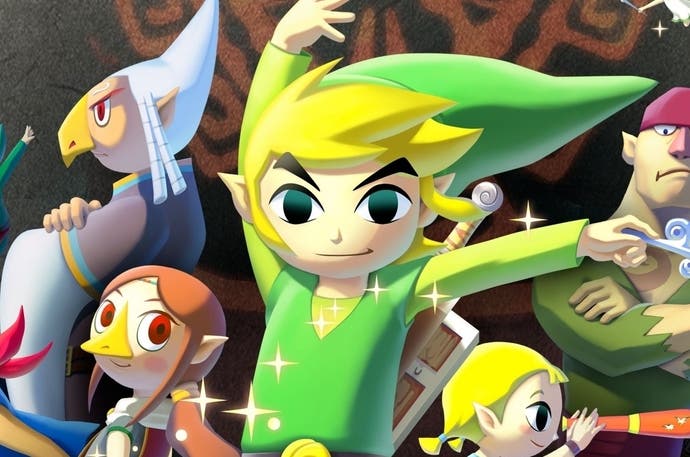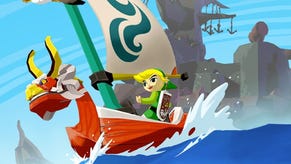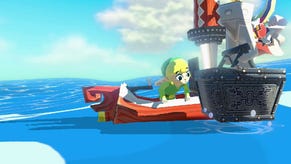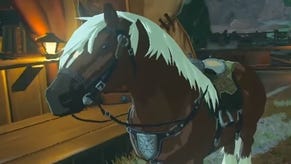Breaking the link to the past: Zelda's Eiji Aonuma
The veteran producer on revising Wind Waker, escaping tradition and finding Nintendo's future.
Eiji Aonuma is The Legend of Zelda. His first game as director, Marvelous on the Super Famicom, was unashamedly influenced by Shigeru Miyamoto's early classics. Under Miyamoto's wing, he was a lead designer on Ocarina of Time, co-directed Majora's Mask, and directed The Wind Waker and Twilight Princess. He's been the series' leading light since Miyamoto handed him the producer baton in the late 2000s - although it wasn't the first time the great Nintendo designer had tried to pass overall control of the series to his protégé.

That was when I first met him, in 2004. I'd flown to Nintendo's HQ in Kyoto to preview an untitled new entry in the series for GameCube. It was the game that eventually became Twilight Princess. Its visual style and adolescent Link were a sharp backpedal from the childlike verve of Wind Waker's animated, toon-shaded look. In interview, Aonuma took pains to apologise for Wind Waker's slow sales and its slightly rough, rushed conclusion. He seemed low-key, reserved and humble. This week, meeting him for the second time at E3, I found out why.
It was a different Aonuma: relaxed and animated, and quietly confident, if far from boastful. The 50-year-old wore a red polo shirt with a Pikmin design, a salt-and-pepper goatee and boyishly centre-parted hair. He has a face attractively creased with deep laughter lines and an infectious chuckle.
We talked about the two appealing but rather backwards-facing Zelda games on Nintendo's E3 stand: the Wii U version of The Wind Waker, due for release in October - a subtle but surprisingly extensive revision of the 2002 game - and A Link Between Worlds for 3DS, a direct sequel to the 1991 Super Nintendo classic A Link to the Past. But we also talked about his intention to break with tradition in the next edition in the series for Wii U, and about Nintendo's struggle to break its ties with its ever-popular franchises. And at the end of the interview, I found out why he'd seemed so worried 9 years ago.
(Additional material from this interview will be published soon by our friends and partners at Nintendo Life, and it will be worth checking out.)
EG: As you revisit The Wind Waker now, so many years after directing it, how do you feel about it from this perspective?
Aonuma: After Wind Waker was released I heard all of the voices and opinions that came from the people who actually played it after it had launched. I carried those opinions, those ideas and thoughts about Wind Waker, when I worked on subsequent games as well.
So when the decision was made to make an HD version, using the power of HD and thinking about the toon-shading and how that would be effective, I'm certainly very excited about making the kind of adjustments so many said that they wanted after the first one was released.
After the GameCube version was released it wouldn't have been the right time to make those adjustments based on how people thought the game played. But now we have the Wii U, a system that is more powerful, has more powerful graphics and the GamePad. So I'm hoping that in addition to making the changes that people wanted from the GameCube version, we can do things even beyond what people expected.
EG: Do you think people's feelings about the GameCube version changed over time? Do you think people feel differently toward it now, compared to when it was released?
Aonuma: It was certainly a new graphical presentation - the Zelda world with its toon-shading, and also the younger, smaller Link. We heard the opinions of those Zelda fans that were somewhat critical at that time. They were saying that they didn't want it, quite frankly.
But now with the HD power, the shading, we're hoping to really bring a new graphical presentation to this product that, yes, when it was released some were negative about. We hope to bring those people back.
EG: You said yesterday you'd implemented a speed boost for the boat, but personally I liked that it sometimes slowed me down and gave me some time for my mind to wander. Isn't there a place for games that do that?
Aonuma: The higher speed option that we're including in the HD version is actually an option - you can turn it on and off. The reason we added it was because there were people who were irritated that it took longer than they wanted to reach their destination.
So, like I said, it is an option. If you want to take your time and make it a more leisurely experience you can do so. I think there's value in that. But we've also tuned that as well - so even if you don't use the high-speed option, if you use the GameCube version's speed, that experience should also be optimised as well.
"I've been asked about new franchises and I think it'd be great if we could find another one. I think it's necessary for us to create new experiences and characters for fans to latch on to."

EG: It's been known for some time that some dungeons were removed from the original version of Wind Waker. Will any of those removed dungeons be reinstated?
Aonuma: I've received many questions about additional content beyond what was in the GameCube version of the game, but our desire is to stay true of the story that was in the original. If we add dungeons then that will affect other parts of the GameCube version, which we really want to stay true to.
If it felt like there were maybe too few dungeons then I feel that what was wrong with the GameCube version was the pacing. It was thrown off because it took longer to get to certain dungeons. There was a waiting period, and then when you arrived there the experience maybe didn't feel as big as you'd waited so long to get there. We're tuning the game to alleviate all that. The pacing should feel appropriate to the overall experience this time. And, quite honestly, those dungeons we removed we used in other games so we can't use them in this version!
EG: Can you tell me which dungeons they were?
Aonuma: I can't! [He laughs and shakes his head vigorously.]
EG: This is an interesting point. To what extent can you tune and change a game when re-making it - and ensure it still remains the same game it was before?
Aonuma: With Wind Waker you discovered something new, completed it and then moved on. But the gap between those experiences was just too long. It felt like you were engaged in something and knew you had another goal to get to, but the process of getting there was too far. So we need to tighten those and make the overall experience and story feel tighter.
EG: Moving on to A Link Between Worlds - there haven't been very many direct sequels in the Zelda series. What made you want to revisit A Link to the Past?
Aonuma: The thought was that we wanted to make a top-view Zelda with the concept that every once in a while Link would enter the wall, and only at that time would it become a 3D experience.
We figured that if we used this Link to the Past world, this architecture and structure in place, we could create it even more quickly. There's also a lot more to explore in that environment, so we felt that world would be a great starting point. So if we say it's a sequel to A Link to the Past, it's easier for players to understand where we're coming from and our starting point for this story. It also felt like that story was really well suited for a sequel.
EG: Zelda is famous for its 'overworlds' which connect the various regions - the sky in Skyward Sword, the sea in Wind Waker, Hyrule Field in Ocarina of Time. What is it that makes a really good overworld in a Zelda game? What qualities should that area have?
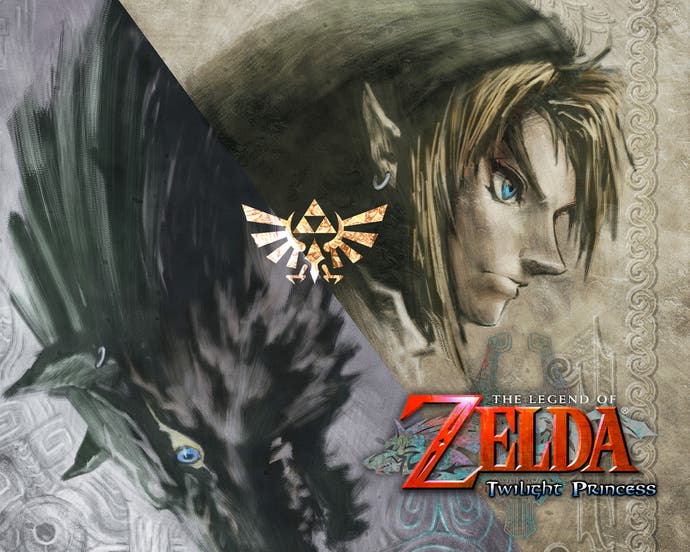
Aonuma: When creating an overworld, as developers we see everything. We know what all of a game's world and its maps look like. But as a player you know nothing. The map unfolds as the story progresses, and the element of surprise is key to the experience. We're always looking to incorporate that element of surprise and discovery when we create an overworld setting. That's the key element.
EG: Zelda is a series with very strong traditions. You'll find many elements that are familiar from one game to the next. Do you ever wish the series had more flexibility?
Aonuma: That's exactly what I was talking about in the Nintendo Direct shown earlier this year, about visiting the Zelda tradition and remoulding the formula. We're looking at ways to do that and we hope people look forward to experiencing those.
EG: During that Nintendo Direct you hinted that we may no longer play Zelda alone on Wii U. Do you think local or online multiplayer would be better for the series?
Aonuma: In saying it's not a single-player or lone experience, I didn't necessarily mean multiplayer. There has actually been multiplayer in Zelda games, in Four Swords for example. But for example in Wind Waker, with the Tingle Bottle - it's not a traditional multiplayer experience but you certainly have the feeling that other people are exploring the same world and sharing information.
So that's one way that I meant that it's not a single-player experience. We'll continue to explore different ways of opening up this world beyond a single-player experience, but that's not necessarily to say that there will be typical multiplayer.
EG: As part of opening up Zelda games for a new generation, are you looking at any other games for inspiration? Dark Souls, perhaps, or Skyrim?
Aonuma: Skyrim! [For some reason mention of Bethesda's fantasy epic tickles him, and he laughs.] Obviously I play other games, and I'm curious what Zelda fans like about the Skyrim experience. Maybe there are some Zelda fans who are looking for something similar out of a Zelda game.
But I don't look at the technology that made these games possible. I don't look at what's happening in the game, but how it made me feel, what in the game moved me, and how I can bring out those same emotions in players who play my games. My intent isn't to copy them, but those are the things that stay with you as a player.
It's not what you see but how the game makes you feel that makes you feel closer to the experience. It's more about the feeling and expression of emotions in the game, and I do take that into consideration when working on my own projects.
It's like the difference between someone who takes a picture and looks at that picture when drawing a painting, and someone who sees something, keeps it in their head and then tries to recreate that.
EG: Zelda and Mario are synonymous with Nintendo, but we haven't seen an all-new series for a while. Do you think that's a healthy thing for the company?
Aonuma: I've been asked about new franchises and I think it'd be great if we could find another one. I think it's necessary for us to create new experiences and characters for fans to latch on to. But we've also got these great existing series that fans ask for new games for. So we've got to maintain these existing franchises while at the same time finding and creating these new IPs. That's a lot of work, it is very challenging.
"It's not what you see but how the game makes you feel that makes you feel closer to the experience. It's more about the feeling and expression of emotions in the game."

I am part of the old guard at Nintendo, and I feel like it's also my responsibility to raise the new employees and really hone their skills to find that new IP for us. It's certainly something we're always trying to do - to empower the next generation to engage their minds and come up with that new special thing for Nintendo. But a lot of it is luck, a lot of it is chance. If you know of anyone, please give me a call!
EG: My next question was going to be: would you like to work on something brand new yourself? But are you saying you'd rather find new talent to create new games?
Aonuma: We have newer, younger directors that we're bringing into the trenches that are replacing some of us old guard, some of whom are moving into different roles. But we've got to maintain our existing franchises and make sure they're doing well, while having a team of people looking for and exploring new opportunities.
We need to really figure out how to strike that balance and resources are always limited everywhere. It's just striking that balance between committing a group of people to search for new things while maintaining existing franchises.
That's not to put the responsibility entirely on them. It's also my responsibility to try and find answers for these new directors - new projects for them to work on that will give birth to the new awesome IP we've all been waiting for.
But timing is tricky. I've got Zelda to take care of, and I've also got to do this, too. Timing is going to be key on when I can pull myself off Zelda to do this.
EG: You won't remember this, but we've met before. I visited Nintendo in Kyoto to see Twilight Princess, when it was still a GameCube game with no title. What have you learned about making games since that time?
Aonuma: Ah! [He seems genuinely surprised by this, and laughs. Then he pauses, visibly thinking back to that time.] Twilight Princess was an interesting time for me. I started off as producer but had to move to director - the reason for that was I didn't really know what a producer did. I didn't really know what was expected of me. But through my projects since I've learned what is expected of me. Between then and now I've learned that a producer is to say, "This is what I want, this is what the vision is." And, once the team moves on that, to course-correct if they start straying and, if they're on the right track, to reinforce that.
